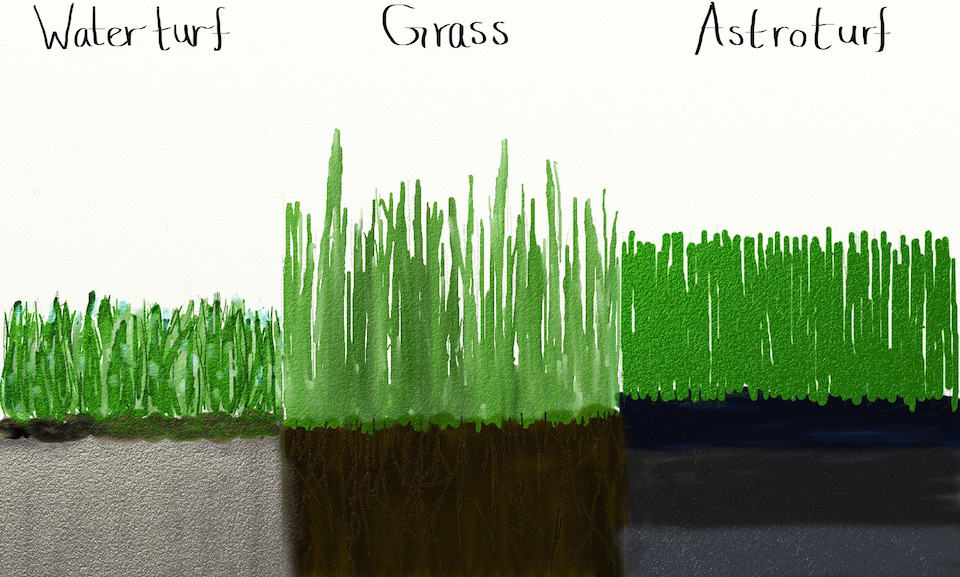From Varsity Stadium’s synthetic turf to the iconic grass we tread on every day walking to-and-from Con Hall, the surfaces athletes practice and compete on can have a huge effect on their game. Here is a breakdown of the three types of field surfaces that can be found at U of T and the differences between them.
Artificial turf
Also referred to as synthetic turf, artificial turf is a patented composition that mimics the physical attributes of a natural grass environment and has become widely useful in recent years. Composed of specific types of plastics, rubber, and sand, the turf was first introduced to improve sports fields but now has been implemented in residential, public, and private spaces as well. The main benefits of synthetic turf are its low maintenance cost, its durability, and its superior weather resistance when compared to a natural field. Despite these benefits, Toronto Public Health guidelines warn that synthetic turf’s pesky rubber pellets can get caught in athletic wear and implore athletes to be conscious of excessive heat on the field. Although touted as more durable than grass, artificial turf does deteriorate if not properly maintained, which was highlighted by the US women’s soccer team’s recent refusal to play on a decrepit and dangerous turf field in Hawaii.
Natural Turf (Grass)
Deemed to be the safest field surface for athletic play, good ol’ grass has also been know to be unreliable when exposed to high levels of activity without significant maintenance. Although we may be most comfortable with this field, the quality of natural turf that is not routinely maintained for athletic use is highly dependent on recent weather — think front campus after a rain-storm. Although more labour intensive to maintain than artificial turf, grass has become the catalyst for gender equality in sport. This is especially true for men’s and women’s soccer; where women are routinely expected to play on turf, while men get to play on the much preferred grass. Everyone’s favourite Toronto team, the Blue Jays are even looking into incorporating a real grass field by the 2018 MLB season to replace the current artificial turf in the Rogers Centre.
Water-Based Turf
Introduced mainly for competitive field-hockey play, the benefits for this type of artificial turf includes reduced abrasive effects, a constantly lubricated field, and a nearly unaffected path of motion for a ball in play. Water-based turf can also increase the level of activity during a match by allowing athletes to traverse an area of turf much quicker. A water-based turf such as on back campus, physically does not have an underlying fill material and is instead composed of multiple uniform layers of composite material with the playing surface on top, thus giving water-based turf its iconic smooth look and feel.
Editor’s note: An earlier version of this article made erroneous references to AstroTurf. The Varsity regrets the error.


